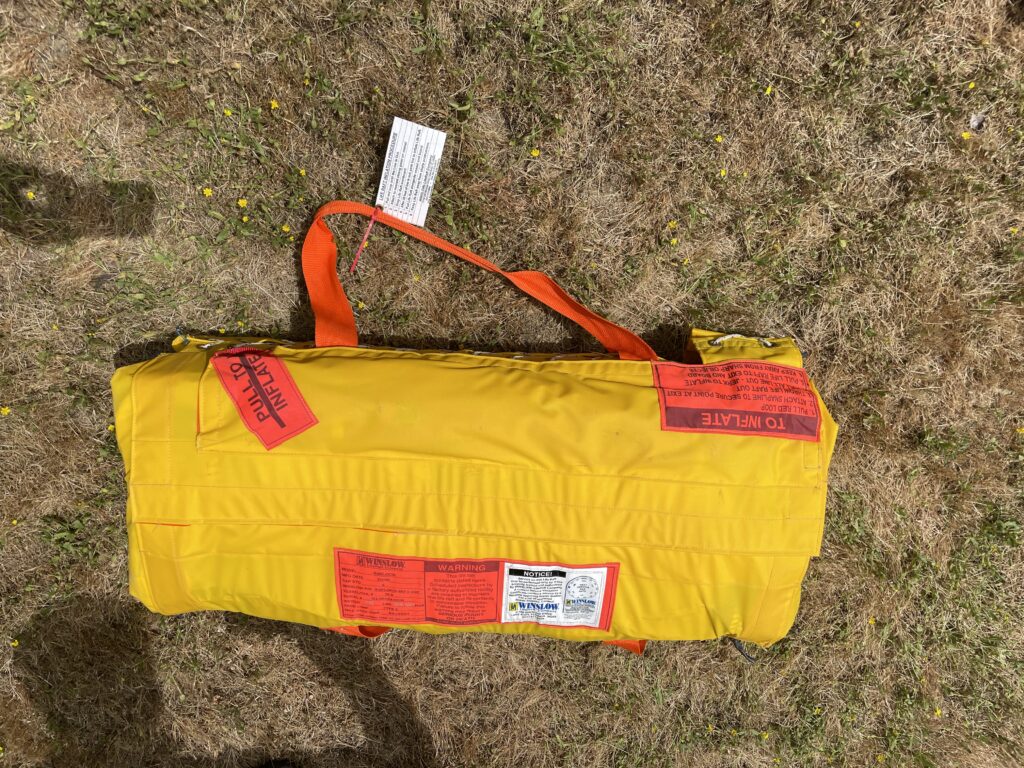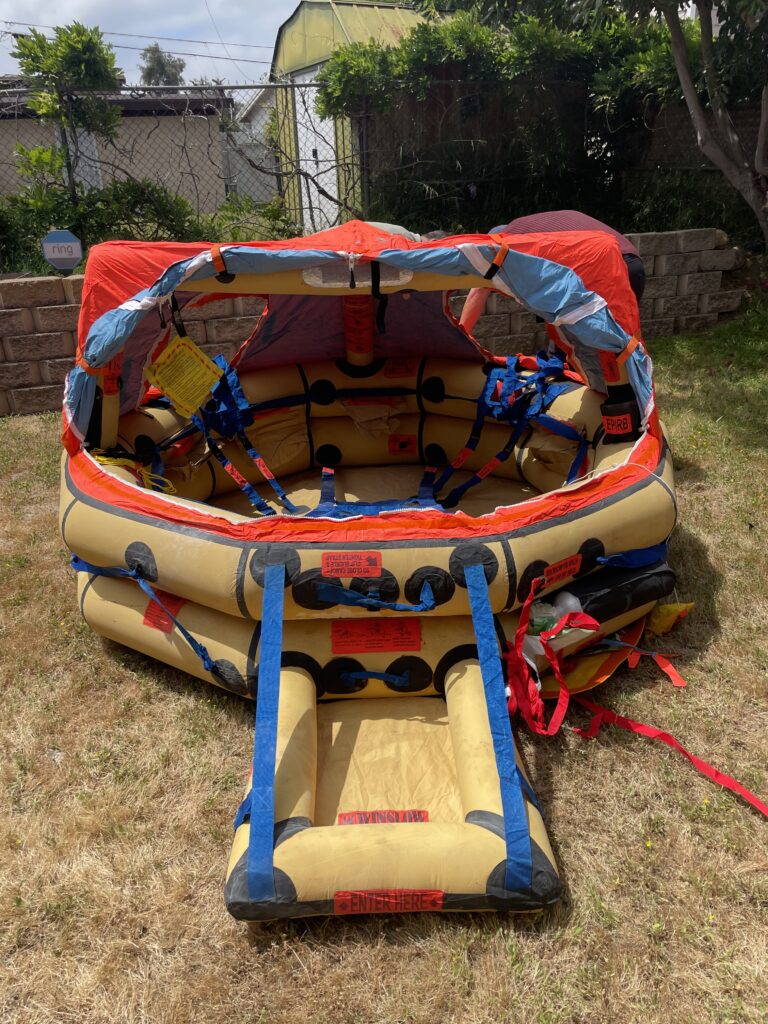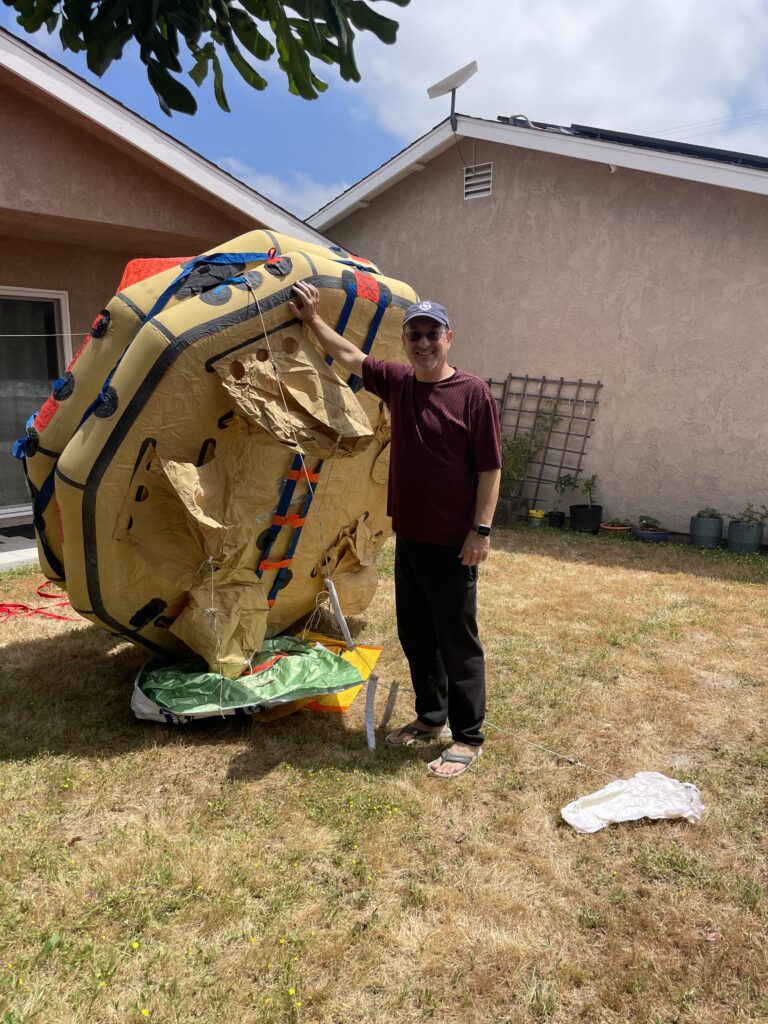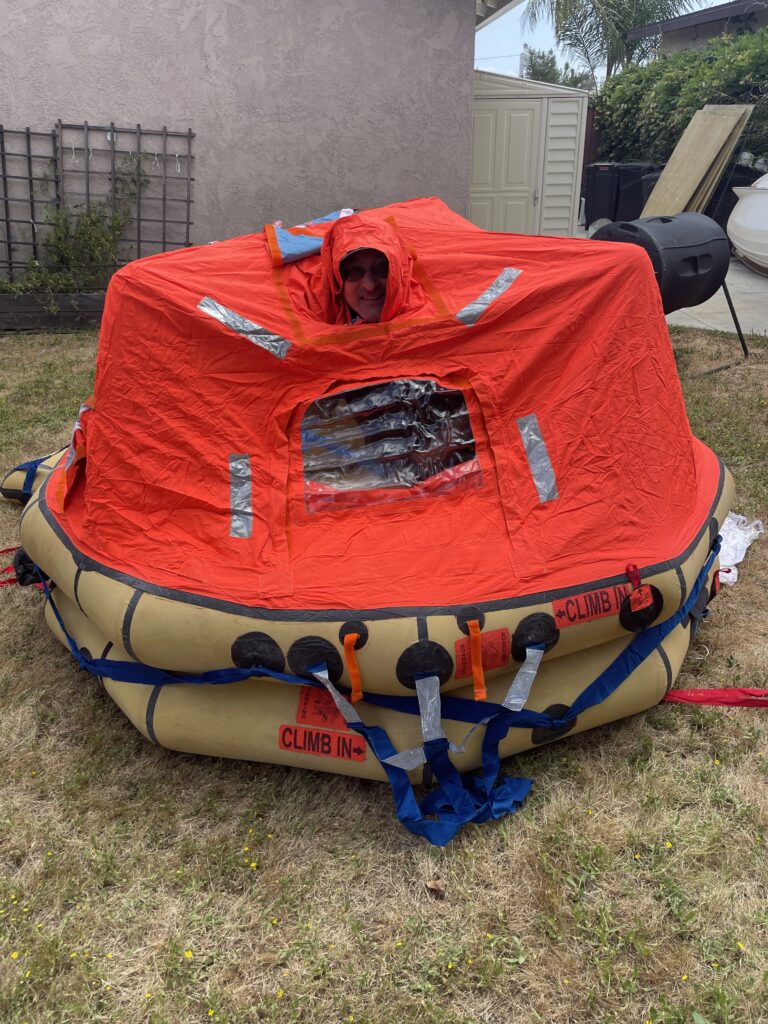When Kosmos was new, we bought a six-person Winslow life raft that was vacuum-sealed for extended life. We got a Maxi model with food, water, EPIRB and lots of great features. All these years, we kept it under the settee in the salon, so it was very protected. Even though it was 18 years old, we believed it was still in good shape thanks to the protected location.

Unfortunately, our insurance company wouldn’t recognize such an old life raft, so the insurance company insisted we get a new one before going to the Sea of Cortez. We chose the Winslow Ultra-Light Offshore four-person model that has all the same non-perishable goodies, but does not have perishable items in it. Our old life raft was 70-pounds — there was no way Keith nor Christi could launch it without help. The new life raft is 35-pounds, which Christi and Keith can each manage alone.
Our ditch bag was a large, heavy duffel bag. We’ve replaced it with three water-proof backpacks (one for each of us). One of the backpacks has the perishable things that were previously in the life raft; the other two have the rest of the contents of the old ditch bag. With the bags on our back, our hands will be free to launch the life raft and deal with other things.
We decided it would be a great safety training exercise to inflate the old life raft. Our friend, Marty, joined us. Marty gave us a lot of helpful information. Here is a video Marty took of it:
The raft was only certified to last for 3 years, so we’re impressed that it worked perfectly after 18-years! Go Winslow! Here is a still shot of it fully inflated, before we got in and started messing with it:

We’re glad that we’d inflated it. Now, if we we’re in an emergency, we all know exactly what to do and what to expect. We’re also glad that we had the opportunity to familiarize ourselves with what each of the components/features look like, where to find them, and how they each work. Here is a video (cut into three parts) explaining some of the components/features:
Here is a still shot of the underside of the raft, with the ballasts, cord to grab it and flip it over if it tips, and the sea anchor (the white fabric to Eric’s right). The green and yellow material to Eric’s left are the materials the raft had been packed in. Marty says the material has multiple uses, including as blankets:

Here is a still shot of the moon roof. It is designed to be able to stand completely straight and see the sky while still being protected; it’s also a place where you can collect rain water for drinking.

We hope this post is helpful to our fellow boaters. Let us know if you have any questions.
